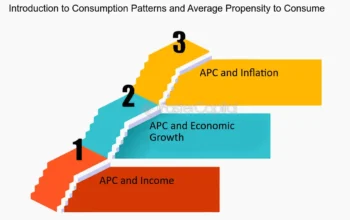In today’s fast-paced and highly competitive business world, companies are constantly vying for the attention and loyalty of consumers. With the rise of social media and the increasing importance of online presence, maintaining a positive reputation has become more crucial than ever before. This is where public relations (PR) comes into play. PR is the strategic communication between a company and its target audience, with the goal of building and maintaining a positive image and reputation. In this blog post, we will delve deeper into the world of public relations, exploring its significance, strategies, challenges, and future in the digital age.
The Significance of Public Relations in the Modern Business World
Public relations is not a new concept. It has been around for centuries, with evidence of its use dating back to ancient civilizations. However, with the advent of technology and the internet, the role of PR has evolved significantly. Today, it is an essential component of any successful business strategy.
One of the main reasons for the growing importance of PR is the rise of social media. With platforms like Facebook, Twitter, and Instagram, companies now have direct access to their target audience. This means that they can communicate their message and brand image directly to consumers, without relying on traditional media outlets. As a result, PR has become more personalized and targeted, allowing companies to build stronger relationships with their audience.
Another significant factor contributing to the significance of PR is the increasing skepticism towards traditional advertising. With the rise of ad blockers and the constant bombardment of ads, consumers have become immune to traditional marketing tactics. This is where PR shines – by using storytelling and creating authentic connections with consumers, PR can effectively cut through the noise and build trust and credibility for a company.
Strategies and Best-Practices in Public Relations
Effective PR campaigns require careful planning and execution. Here are some strategies and best-practices that can help companies build and maintain a positive reputation:
1. Know your audience
The first step in any PR campaign is to understand the target audience. This involves researching their demographics, interests, and behaviors. By knowing who they are and what they care about, companies can tailor their message and communication channels accordingly.
2. Develop a strong brand story
In today’s digital age, consumers are bombarded with information from all directions. To stand out, companies need to have a compelling brand story that resonates with their audience. This story should be authentic, relatable, and consistent across all communication channels.
3. Utilize social media effectively
As mentioned earlier, social media has become an integral part of PR. Companies should use these platforms not just for promotion but also for engaging with their audience. This means responding to comments and messages, sharing user-generated content, and creating interactive campaigns.
4. Be transparent and honest
In the age of fake news and misinformation, honesty and transparency are more critical than ever before. Companies should be open and honest with their audience, especially during times of crisis. This builds trust and credibility, which are essential for maintaining a positive reputation.
5. Monitor and analyze results
Like any other business strategy, PR campaigns should be monitored and evaluated regularly. This involves tracking metrics such as reach, engagement, and sentiment analysis. By analyzing the results, companies can make necessary adjustments and improve the effectiveness of their PR efforts.
The Interplay Between Public Relations and Marketing
While PR and marketing are often used interchangeably, they are two distinct disciplines with different goals and strategies. However, they are closely intertwined, and when used together, they can create a powerful impact on a company’s reputation and success.
Marketing is primarily focused on promoting products or services and driving sales. It uses various tactics such as advertising, promotions, and sales to reach and persuade consumers. On the other hand, PR is more focused on building relationships and managing a company’s reputation. It uses tactics such as media relations, events, and influencer partnerships to create a positive image for a company.
The interplay between PR and marketing is crucial in today’s business world. While marketing can generate leads and drive sales, PR can build trust and credibility, which ultimately leads to customer loyalty and advocacy. By working together, these two disciplines can create a holistic approach to promoting a company and its offerings.
Evaluating the Effectiveness of Public Relations Campaigns
As mentioned earlier, monitoring and analyzing results is an essential aspect of any PR campaign. However, it is not just about tracking metrics; it is also about evaluating the effectiveness of the campaign in achieving its goals. Here are some key factors to consider when evaluating a PR campaign:
1. Alignment with business objectives
The first step in evaluating a PR campaign is to determine whether it aligns with the overall business objectives. This means understanding the purpose of the campaign and how it contributes to the company’s goals. For example, if the goal is to increase brand awareness, then the campaign should focus on reaching a wider audience and generating buzz.
2. Reaching the target audience
A successful PR campaign should effectively reach the target audience. This involves not only reaching a large number of people but also reaching the right people. For example, if the target audience is young adults, then the campaign should use platforms and messaging that resonate with this demographic.
3. Generating positive sentiment
One of the main goals of PR is to create a positive image and reputation for a company. Therefore, it is essential to evaluate the sentiment surrounding the campaign. This can be done by analyzing social media mentions, media coverage, and customer feedback.
4. Impact on brand perception
PR campaigns should have a direct impact on how a company is perceived by its target audience. This can be measured through surveys and focus groups, where participants are asked about their perception of the brand before and after the campaign.
5. Return on investment (ROI)
Finally, it is crucial to evaluate the ROI of a PR campaign. This involves comparing the cost of the campaign with the results achieved. While it may be challenging to measure the direct impact of PR on sales, companies can track metrics such as website traffic, social media engagement, and lead generation to determine the ROI of their PR efforts.
Navigating Challenges in Public Relations: A Case-Study Approach
While PR can have a significant impact on a company’s reputation and success, it is not without its challenges. In this section, we will explore some common challenges faced by PR professionals and how they can be navigated using real-life case studies.
Crisis Management
One of the most significant challenges in PR is managing a crisis. In today’s digital age, where information spreads quickly, a single misstep can have severe consequences for a company’s reputation. Take, for example, the case of United Airlines in 2017. A video of a passenger being forcibly removed from an overbooked flight went viral, causing public outrage and damaging the airline’s reputation. The incident was poorly handled by the company’s PR team, leading to a significant backlash and boycotts.
To navigate this crisis, United Airlines’ CEO issued a public apology and promised to review and improve their policies. The company also offered compensation to the affected passenger and implemented changes to prevent similar incidents from happening in the future. While the damage to their reputation was significant, United Airlines’ swift response and actions helped mitigate the crisis to some extent.
Managing Negative Publicity
In today’s digital age, negative publicity can spread like wildfire, damaging a company’s reputation in a matter of hours. This was the case for Airbnb in 2015 when a host’s home was vandalized by guests. The incident received widespread media coverage, and the company faced backlash for not having proper safety measures in place.
To address this issue, Airbnb launched a $1 million insurance policy for hosts to cover any damages caused by guests. They also implemented stricter verification processes for both hosts and guests. Additionally, they launched a PR campaign highlighting positive experiences of hosts and guests to counter the negative publicity. These efforts helped rebuild trust and improve their reputation.
Dealing with Social Media Backlash
Social media has given consumers a powerful platform to voice their opinions and concerns. This can be both beneficial and detrimental for companies, as it allows them to engage directly with their audience, but also leaves them vulnerable to criticism and backlash. One example of this is the case of Starbucks in 2018 when two black men were arrested at one of their stores. The incident sparked outrage on social media, with many accusing the company of racial profiling.
Starbucks responded by issuing a public apology and announcing that they would close all their stores for a day to conduct racial bias training for their employees. They also reached out to the two men involved and settled with them privately. While the incident had a significant impact on their reputation, Starbucks’ swift response and actions helped mitigate the backlash and rebuild trust with their audience.
The Future of Public Relations in the Digital Age
As we have seen, the rise of technology and social media has significantly impacted the field of public relations. So what does the future hold for PR in the digital age? Here are some trends that we can expect to see in the coming years:
Increased use of data and analytics
With the abundance of data available, PR professionals will increasingly rely on data and analytics to drive their strategies. This means tracking metrics such as website traffic, social media engagement, and sentiment analysis to measure the success of PR campaigns and make data-driven decisions.
Integration with other disciplines
As mentioned earlier, PR and marketing are closely intertwined. In the future, we can expect to see even more integration between these two disciplines, as well as other areas such as advertising, sales, and customer service. This will create a more holistic approach to promoting a company and its offerings.
Embracing technology and automation
Technology has already had a significant impact on PR, and this trend is expected to continue in the future. We can expect to see more automation in tasks such as media monitoring, social media management, and data analysis. This will allow PR professionals to focus on more strategic and creative aspects of their work.
Increased focus on diversity and inclusion
In today’s socially conscious world, consumers expect companies to take a stand on important issues such as diversity and inclusion. This means that PR professionals will need to be more aware of societal issues and ensure that their campaigns are inclusive and representative of diverse audiences.
Ethical Considerations in Public Relations: Building Trust and Transparency
While PR can be a powerful tool for building and maintaining a company’s reputation, it also comes with a great responsibility. As PR professionals, it is essential to uphold ethical standards and maintain trust and transparency with our audience. Here are some key ethical considerations in public relations:
Honesty and transparency
One of the fundamental principles of PR is honesty and transparency. This means being truthful and open with our audience, especially during times of crisis. By being transparent, we build trust and credibility, which are crucial for maintaining a positive reputation.
Respecting privacy and confidentiality
PR professionals often have access to sensitive information about a company and its stakeholders. It is our responsibility to respect privacy and maintain confidentiality when necessary. This not only builds trust but also protects the interests of the company and its stakeholders.
Avoiding conflicts of interest
PR professionals should avoid any conflicts of interest that may compromise their integrity and credibility. This means being transparent about any relationships or partnerships with other organizations and disclosing any potential biases.
Promoting diversity and inclusion
As mentioned earlier, diversity and inclusion are becoming increasingly important in the business world. As PR professionals, it is our responsibility to promote these values and ensure that our campaigns are inclusive and representative of diverse audiences.
The Role of Data and Metrics in Public Relations: Analyzing Success
In today’s data-driven world, PR professionals have access to a wealth of information that can help us measure the success of our campaigns. By tracking and analyzing data, we can determine the effectiveness of our strategies and make necessary adjustments. Here are some key metrics to consider when evaluating the success of a PR campaign:
Reach
Reach refers to the number of people who have been exposed to a company’s message through various communication channels. This includes traditional media outlets, social media, events, and influencer partnerships. A high reach indicates that the campaign has effectively reached a large audience.
Engagement
Engagement measures how people interact with a company’s message. This can include likes, shares, comments, and clicks. High engagement indicates that the audience is actively engaging with the content, which can lead to increased brand awareness and loyalty.
Sentiment analysis
Sentiment analysis involves tracking and analyzing the sentiment surrounding a company’s brand or campaign. This can be done by monitoring social media mentions, media coverage, and customer feedback. Positive sentiment indicates that the campaign has had a positive impact on the company’s reputation.
Website traffic
PR campaigns can also drive website traffic, as consumers often visit a company’s website after seeing or hearing about them through other channels. By tracking website traffic, companies can determine the impact of their PR efforts on lead generation and sales.
Lead generation
While it may be challenging to measure the direct impact of PR on sales, companies can track metrics such as lead generation to determine the ROI of their PR efforts. This involves tracking the number of leads generated through various communication channels and attributing them to the PR campaign.
Global Public Relations: Nuancing Cultural Differences in Communication
In today’s globalized world, companies are expanding their reach beyond their home countries, making it essential for PR professionals to understand cultural differences in communication. What may be acceptable or effective in one country may not be in another. Here are some key considerations when navigating global public relations:
Language and translation
Language is a crucial aspect of communication, and it is essential to ensure that messages are accurately translated into the local language. This means working with professional translators who understand cultural nuances and can effectively convey the intended message.
Cultural norms and values
Different cultures have different norms and values, which can impact how they perceive and respond to communication. It is essential to research and understand these cultural differences to avoid any misunderstandings or offense.
Media landscape
The media landscape varies from country to country, and it is essential to understand the local media outlets and their reach and influence. This will help companies determine the most effective channels for reaching their target audience.
Local influencers and partnerships
Partnering with local influencers and organizations can be an effective way to reach a new audience and build credibility in a foreign market. However, it is crucial to research and vet these partnerships to ensure that they align with the company’s values and goals.
Conclusion
In conclusion, public relations plays a crucial role in building and maintaining a company’s reputation in today’s business world. With the rise of technology and social media, PR has become more personalized and targeted, allowing companies to build stronger relationships with their audience. By understanding the significance of PR, utilizing effective strategies, and navigating challenges ethically, companies can create a positive image and reputation that will contribute to their success. As we look towards the future, it is clear that PR will continue to evolve and play a significant role in the digital age. By embracing technology, promoting diversity and inclusion, and understanding cultural differences, PR professionals can effectively navigate the ever-changing landscape of public relations.




